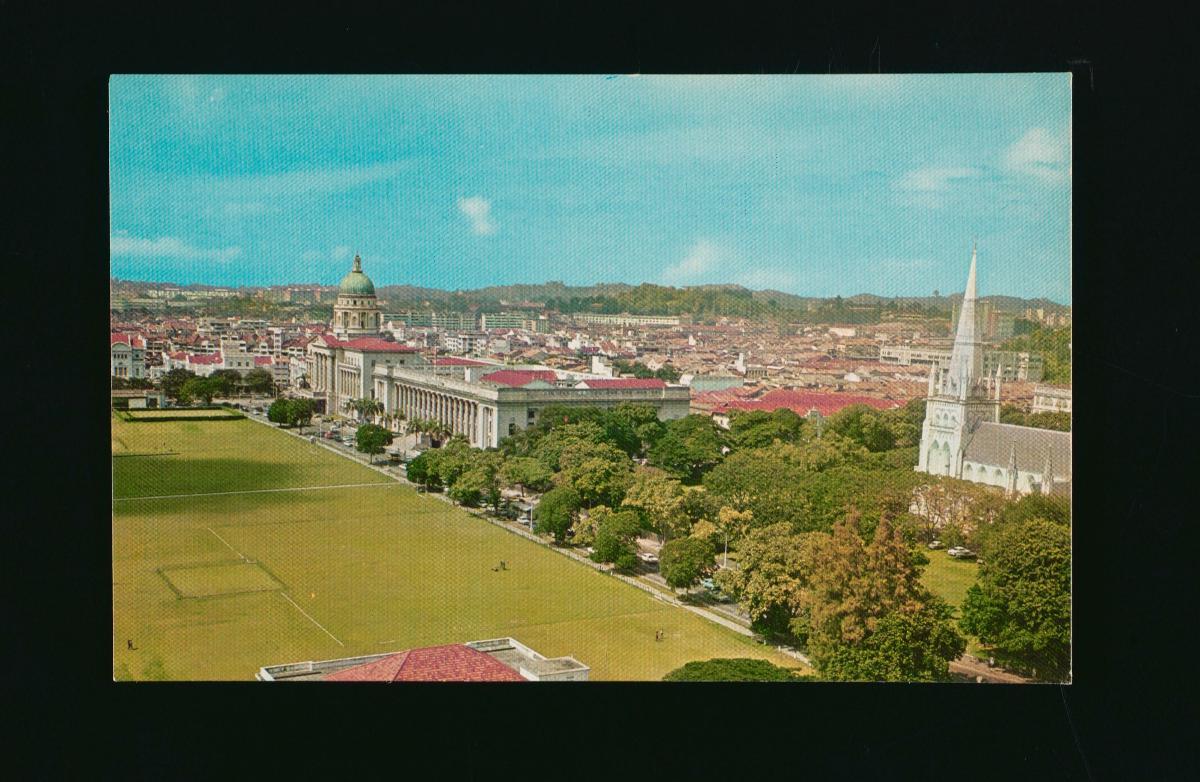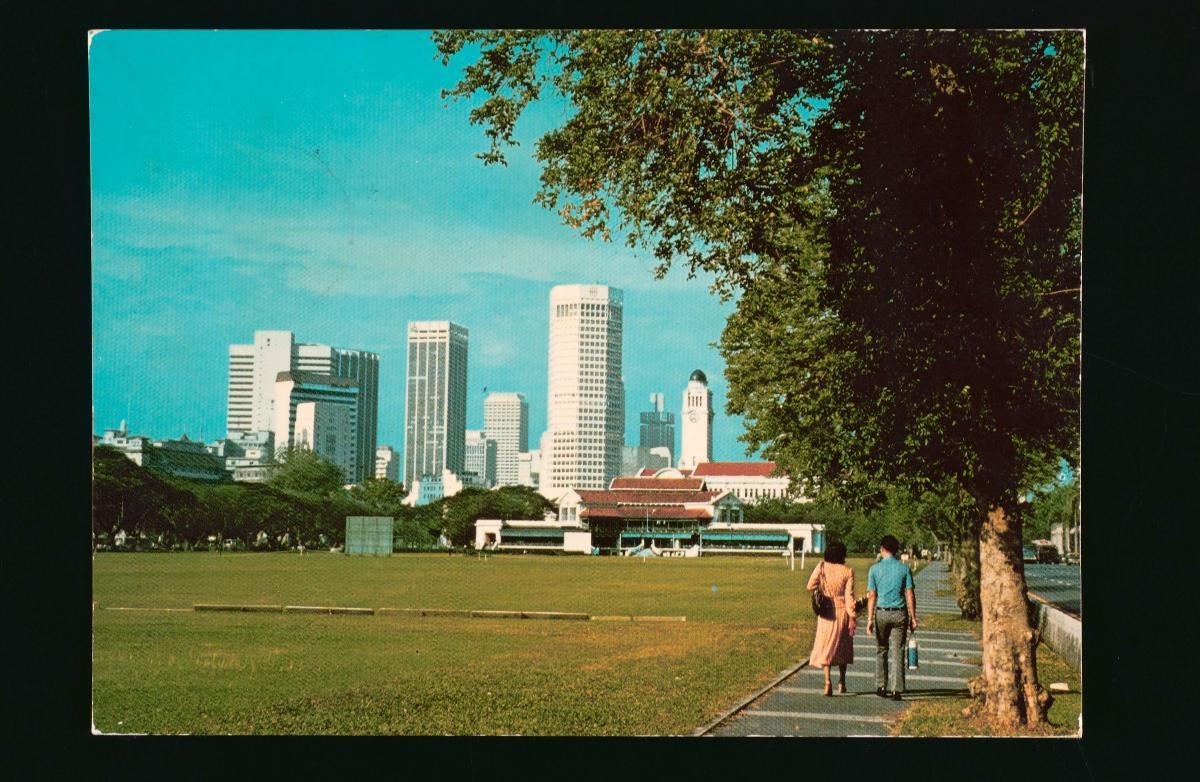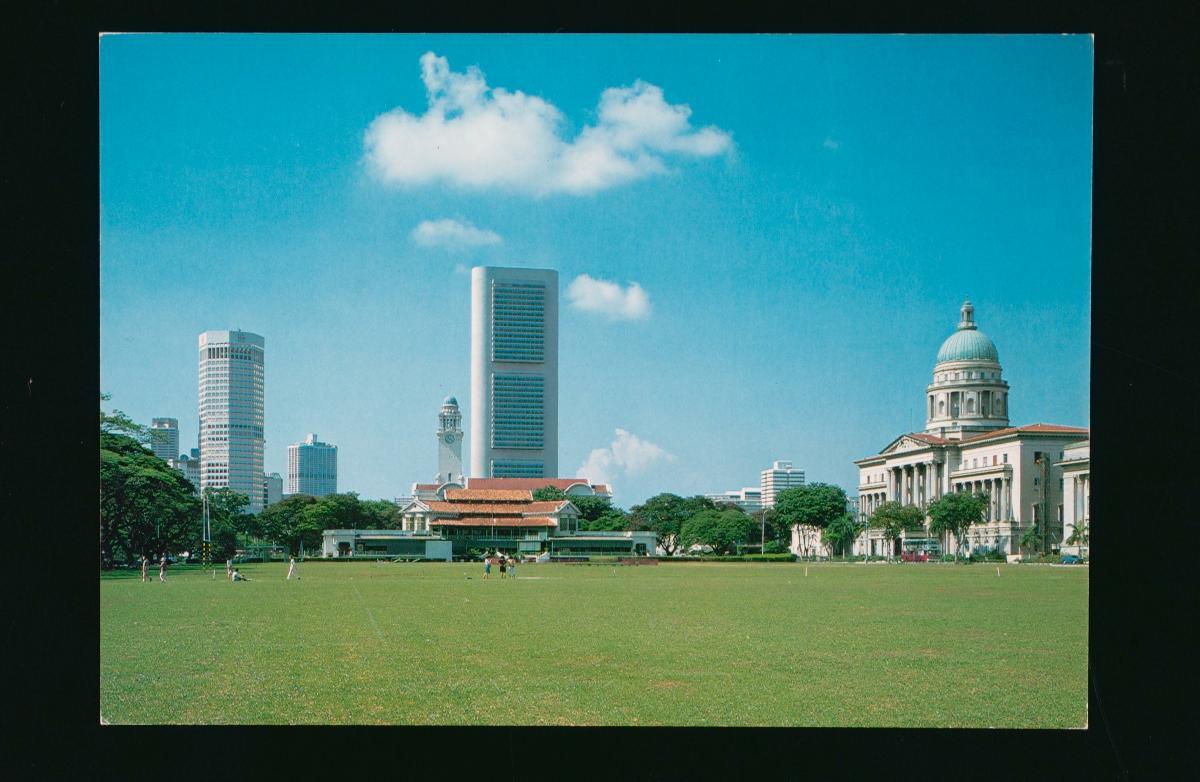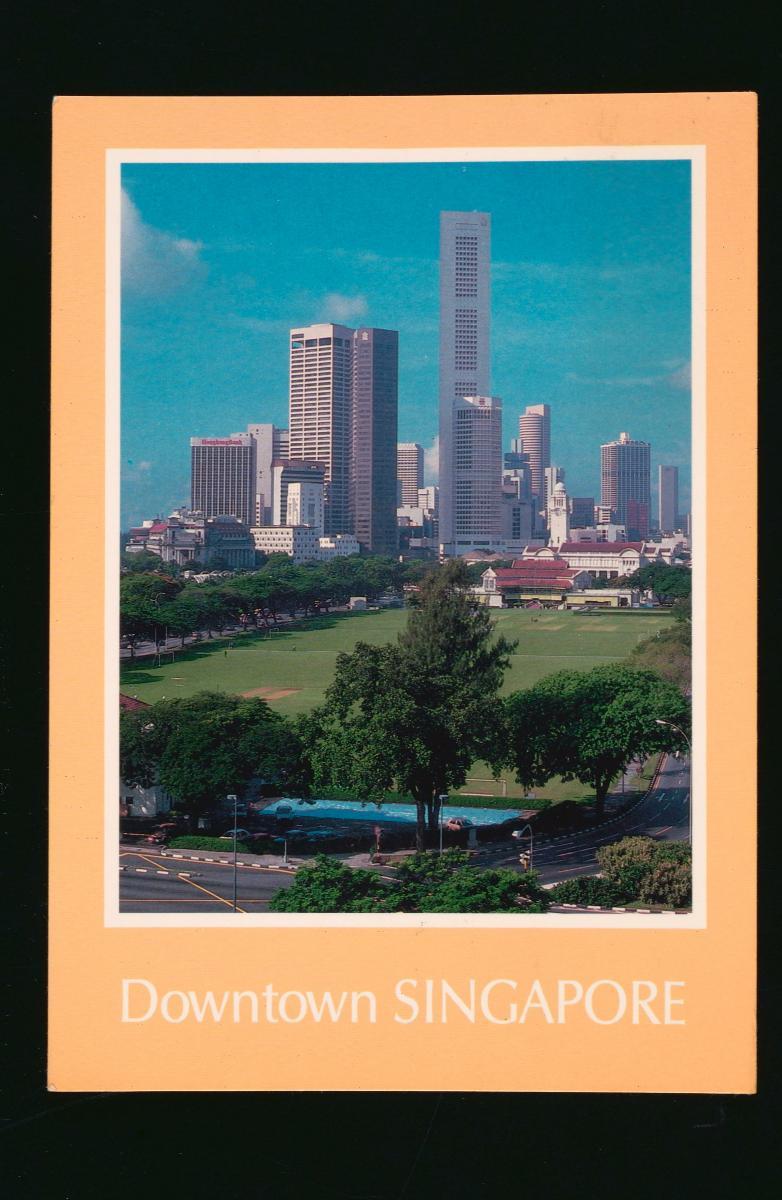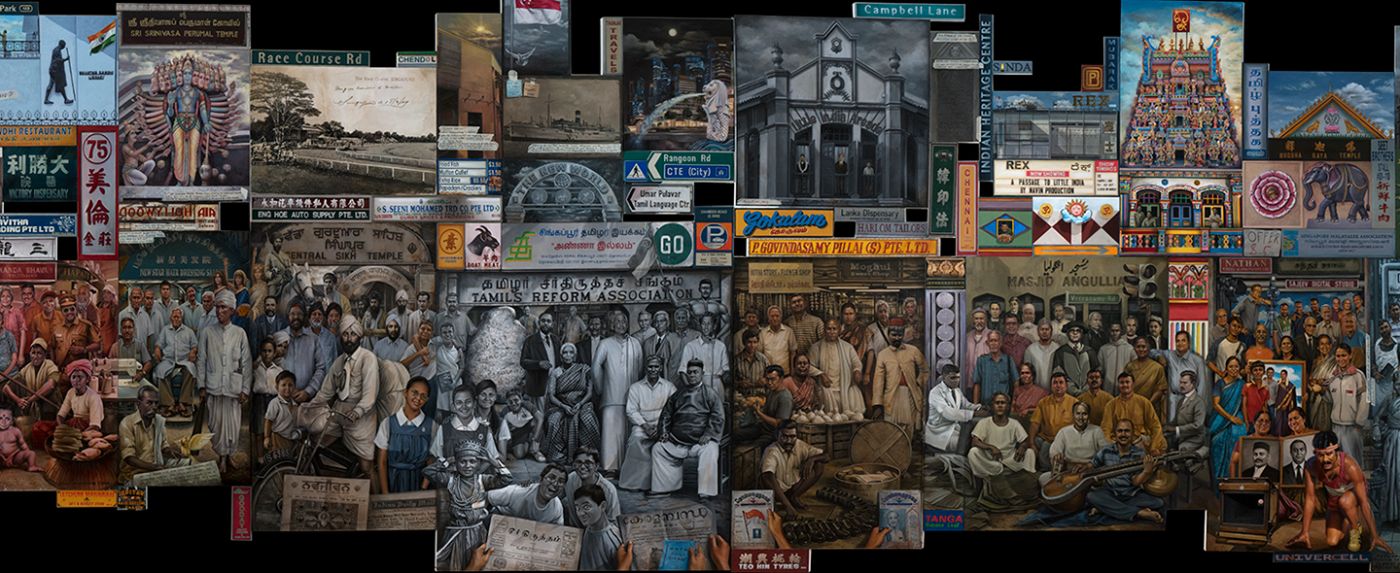The open field on the north bank of the Singapore River next to the civic district was initially referred to as the Plain, Cantonment Plain, Raffles Plain or the Esplanade. In his 1822 town plan, Sir Stamford Raffles had reserved the area for public buildings but this plan was never fully carried out. The area was developed into a popular spot for members of colonial society to meet, socialise and play sports instead. Starting from 1834, the area was used to stage the annual New Year Regatta boat races, which soon expanded into the Sports Day. The establishment of the Singapore Cricket Club (1870) and the Signapore Recreation Club (1885) on opposite sides of the field ensured that it would be used for sporting activities. It was also a popular venue for the New Year’s Eve celebrations that included a waterfront fireworks display. In 1890, the coastline next to the field was pushed further out following land reclamation works at the Espanade area. The field itself was renamed the Padang in 1907 and soon became an important venue for civic events after City Hall (1929) and the Old Supreme Court Building (1939) were established beside it. Notable historic events that took place at the Padang include the Japanese surrender ceremony to the British in 1945 and the declaration of Singapore’s merger with Malaya in 1963. The Padang remains an important public space that is still used to stage important national events such as the annual National Day Parade.





